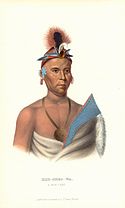Partie Occidentale de la Nouvelle France ou du Canada.
Größe:
4000 x 3215 Pixel (3659720 Bytes)
Beschreibung:
A rare and extremely influential 1755 map of the Great Lakes drawn by Jacques Nicolas Bellin. This map, which appeared in the 1755 issue of the Homann Heirs Atlas Major, covers all five of the Great Lakes as well as the adjacent Indian lands and the English colonies of Pennsylvania, New Jersey and New York. Cartographically this map offers a number of important innovations and is largely derived from Bellin’s very similar map of 1745. The plate was acquired and reissued by Homann Heirs in 1755 in response to European interest in the French and Indian War which started one year prior in 1754. Bellin based this map on the most advanced French cartographic intelligence available at the time. Heidenrich and Dahl consider this map to constitute “the first new material pertaining to New France to appear since the maps of Guillaume de L'Isle three decades earlier. Most notably this map incorporates the work of the French fur trader and explorer Sieur la Verendrye and the explorer-missionary Father Pierre de Charlevoix. From Verendrye, Bellin is able to extract a significantly advanced view, over De L’Isle, of the form of the Great Lakes and their client river systems. He also relies on Verendrye’s journals with regard to the placement of numerous Indian nations and villages. Charlevoix is generally regarded as Bellin’s source for his curious choice to include several fictional islands in Lake Superior, including I. Philippeaux, I. Pontchartrain, and I. St. Anne. This map is the first, though hardly the last, to depict these ghost islands which baffled explorers until the early 19th century. A quick overview of this map will reveal a territory that is very much dominated by various American Indian nations though nominally under a tenuous French hegemony. The vast lands of the Miami, the Iroquois, the Erie, the Huron, the Renard, the Mascouten, and the Illinois overwhelm tiny bastions of French power in the form of various forts and missions. Among these are Fort Frontenac, Fort Niagara, Mission Francois Xavier, and the fledgling “R. et Port de Checagou,” the future site of Chicago. The French, without the vast colonial resources of the English and Spanish, relied heavily on alliance with, rather than outright control of, indigenous populations. Thus it is understandable why the American Indian nations of this region were quick to throw their lot in with the French against the domineering English during the French and Indian War. In the lower right hand quadrants of this map Bellin employs a common cartographic trick to flatter his royal patrons in Paris. By diminishing the proportional size of the English colonial holdings in Pennsylvania, New Jersey, Virginia and New York, Bellin, at least metaphorically, advances the supremacy of the French dominions in North America. In addition to its advanced mapping of the Great Lakes, its introduction of the ghost islands of Lake Superior, and its incorporation of the most recent explorations in the region, this map enjoys lasting significance due to John Mitchell’s use of it in compiling his important wall map, A Map of the British & French Dominions in North America. Mitchell’s monumental cartographic masterpiece was used in 1783 to define the boundaries between Canada and the post-Revolutionary United States, forming the basis for national borders that are still in effect today.
Kommentar zur Lizenz:
|
Dies ist eine originalgetreue fotografische Reproduktion eines zweidimensionalen Kunstwerks. Das Kunstwerk an sich ist aus dem folgenden Grund gemeinfrei:
Nach offizieller Ansicht der Wikimedia Foundation sind originalgetreue Reproduktionen zweidimensionaler gemeinfreier Werke gemeinfrei. Diese fotografische Reproduktion wird daher auch als gemeinfrei in den Vereinigten Staaten angesehen. Die Verwendung dieser Werke kann in anderen Rechtssystemen verboten oder nur eingeschränkt erlaubt sein. Zu Details siehe Reuse of PD-Art photographs. |
Credit:
Diese Datei wurde Wikimedia Commons freundlicherweise von
Geographicus Rare Antique Maps
, einem Fachhändler für
edle und seltene antiquarische Kartographie und historische Karten des 15. bis 19. Jahrhunderts, im Rahmen eines
Kooperationsprojektes zur Verfügung gestellt.
Weitere Informationen zur Lizenz des Bildes finden Sie hier. Letzte Aktualisierung: Sat, 03 Feb 2024 21:33:17 GMT
Relevante Bilder
Relevante Artikel
Pays d’en Haut
Als pays d’en haut bezeichneten die Kolonisten Neufrankreichs im 17. und 18. Jahrhundert das Gebiet rund um die Großen Seen, westwärts bis zum Oberlauf des Mississippi.
.. weiterlesen
Mascouten
Die Mascouten waren ein zu den Algonkin zählender Indianerstamm am Mississippi unweit der heutigen Grenze zwischen Wisconsin und Illinois. Ihre Selbstbezeichnung ist nicht überliefert. Der Name Mascouten, kleines Prärievolk, wurde ihnen von den Fox beigelegt. Sie wurden im Zuge der Biberkriege geschwächt und lösten sich in zwei Gruppen auf.
.. weiterlesen
Fox (Volk)
Die Meskwaki oder Fox (veraltet) sind ein nordamerikanisches Indianervolk der Algonkin-Sprachfamilie. Ihr traditionelles Jagd- und Wohngebiet lag um 1650 östlich, später westlich des Lake Michigan im heutigen US-Bundesstaat Iowa. Ihre Nachfahren leben heute überwiegend in den US-Bundesstaaten Oklahoma, Kansas und Iowa.
.. weiterlesen








